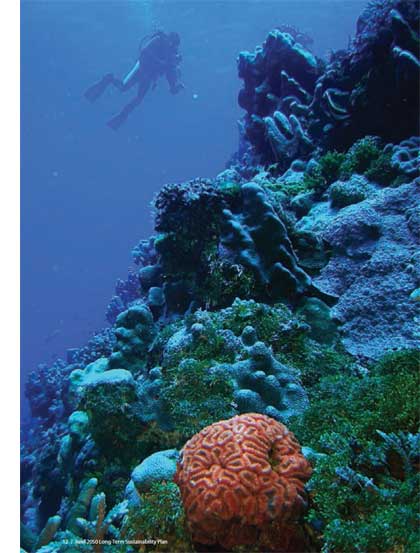The federal government is suing a Chinese company which caused “the largest known direct impact on a coral reef” when one of its ships ran aground in the Great Barrier Reef off Rockhampton in 2010.
The Chinese-registered Shen Neng 1 ran aground on April 3 in 2010, and “despite ongoing attempts to have the ship’s owner pay for damages, the Commonwealth was unsuccessful in securing funds from the ship owner or its insurer to clean-up and remediate the site”.
Yesterday, the Great Barrier Reef Marine Park Authority (GBRMPA) announced that the government has been left with “no alternative but to take legal action in the Federal Court”.
“This has been a great disappointment, particularly given the nature and scale of the incident, and GBRMPA remains concerned about the long-term health of the shoal,” said Dr Russell Reichelt, the Authority’s Chairman.
“The Commonwealth is seeking damages from the ship’s owner for the cost of remediation of the shoal or, as an alternative, orders requiring remediation of the shoal by the ship’s owner.”
A government report into the incident, handed down in June 2011, examined the affect the ship’s grounding had on the reef.
“The vessel grounding caused significant impacts to the habitats of Douglas Shoal, with extensive areas of severe physical damage to, and destruction of, the shoal habitats and considerable contamination by toxic chemicals,” the report found.
Around 115,000 square metres of the shoal were “severely damaged or destroyed” as the ship remained grounded for nine days, and 400,000 more square metres suffered “patchy or moderate” damage.
In a statement yesterday, Dr Reichelt said contamination from toxic chemicals was of ongoing concern.

“Contamination of sediments by tributyltin, a highly toxic component of anti-foulant paint now banned in Australia for current use, was severe, although highly patchy,” according to the GBRMPA report.
“Strong mixing of the waters over the shoal will mean that the effects of this contamination may be spread very widely, well beyond the area of direct contact with the ship's hull.
“There was also significant pollution by oil, and by oil dispersants, at the time of the grounding,” with oil found on islands up to 25 kilometres from the grounding site.
The government’s announcement that it will go to the courts to try to seek funding for rehabilitation comes off the back of allegations on Tuesday that it has so far failed in that task.
The government should pay to fix the damage now and recoup its costs later, the Greens’ Environment Spokesperson Larissa Waters said.
“The Great Barrier Reef Marine Park Authority said in Senate Estimates that the clean-up works are ‘urgent' and would cost around $50 million, or about one full year's funding of the Authority,” Waters said.
“Five years after the Shen Neng coal ship ran into Douglas Shoal, the wreck is still poisoning the Reef.”
This slow progress, the Queensland Senator said, raises serious questions about plans to expand Abbot Point Port near Mackay.
There has been solid political support for plans to expand the port – adjacent to the Great Barrier Reef Marine Park – into the largest coal terminal in the world.
The port would help facilitate the export of coal from the Galilee Basin, which if developed as planned would account for more emissions than entire nations like the UK, Italy and South Africa when the coal is burnt.
Adani, the company seeking approval for the port expansion, has a history of breaching environmental law in its home state of India.
“The Shen Neng disaster should serve as a constant reminder of the high stakes of shipping coal in the Reef,” Waters said.
The case has been listed for trial in Brisbane in April next year.
Donate To New Matilda
New Matilda is a small, independent media outlet. We survive through reader contributions, and never losing a lawsuit. If you got something from this article, giving something back helps us to continue speaking truth to power. Every little bit counts.




